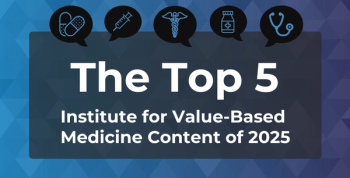
High-Deductible Health Plans a Problem for Patients With Cancer
As high-deductible health plans (HDHPs) grow in popularity, the University of Michigan Center for Value-Based Insurance Design is advocating for a clinically nuanced alternative to the traditional HDHP.
This article was collaboratively written by A. Mark Fendrick, MD, director of the Center for Value-Based Insurance Design (V-BID), and several V-BID Center staff.
Receiving a cancer diagnosis can be one of the most terrifying moments of a patient’s life, but for many patients with
Originally designed to engage consumers in choosing lower-cost care options, thereby reducing healthcare spending, studies have shown that HDHPs result in nonspecific reductions in the use of both low- and high-value services. A
When faced with a possible breast cancer diagnosis, patients with high deductibles were more likely to delay necessary next steps and treatments, such as diagnostic imaging and biopsies, lumpectomies and mastectomies, and chemotherapy. Though the study did not include a longitudinal analysis of the effect of initial delays in treatment on patient outcomes, it is widely acknowledged that prognoses improve with earlier detection and treatment.
Despite concerns over patients’ underuse of necessary services, HDHPs have continued to grow in popularity, with nearly 20 million enrollees and more than half of covered workers in the United States facing a plan deductible of $1000 or more. This popularity has necessitated efforts to mitigate the negative financial and health effects of HDHPs.
Expanding the IRS “safe harbor” would increase the attractiveness and clinical effectiveness of HDHPs and would better align consumer engagement with provider payment reform initiatives. Adoption of voluntary, clinically-nuanced HVHPs has the potential to mitigate cost-related non-adherence, enhance patient-centered outcomes, allow for premiums lower than most preferred provider organizations and health management organizations, and substantially reduce aggregate healthcare expenditures. The HVHP would provide millions of Americans a plan option that better meets their clinical and financial needs.
For more information, read about HDHPs and the
Newsletter
Stay ahead of policy, cost, and value—subscribe to AJMC for expert insights at the intersection of clinical care and health economics.







































